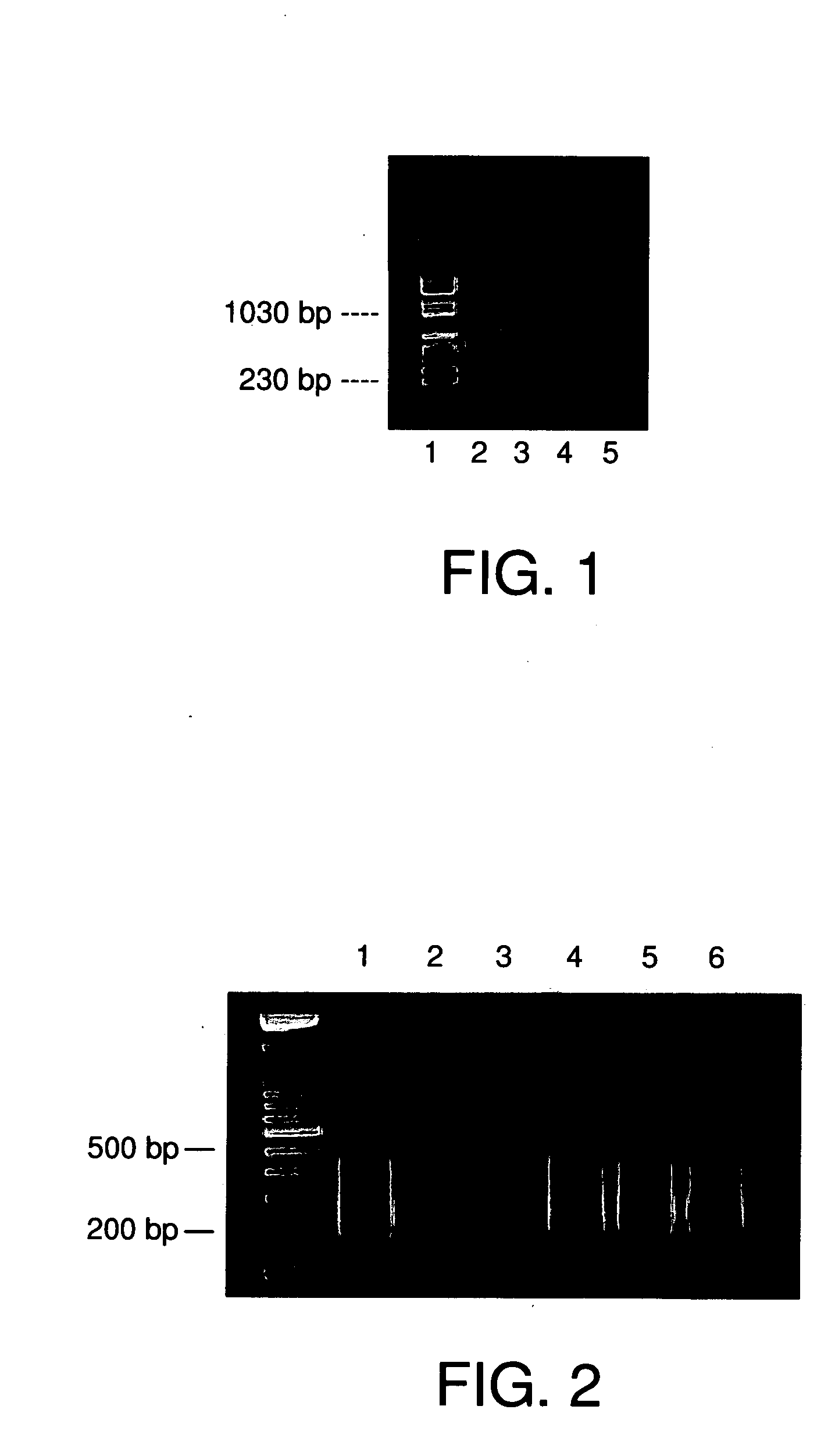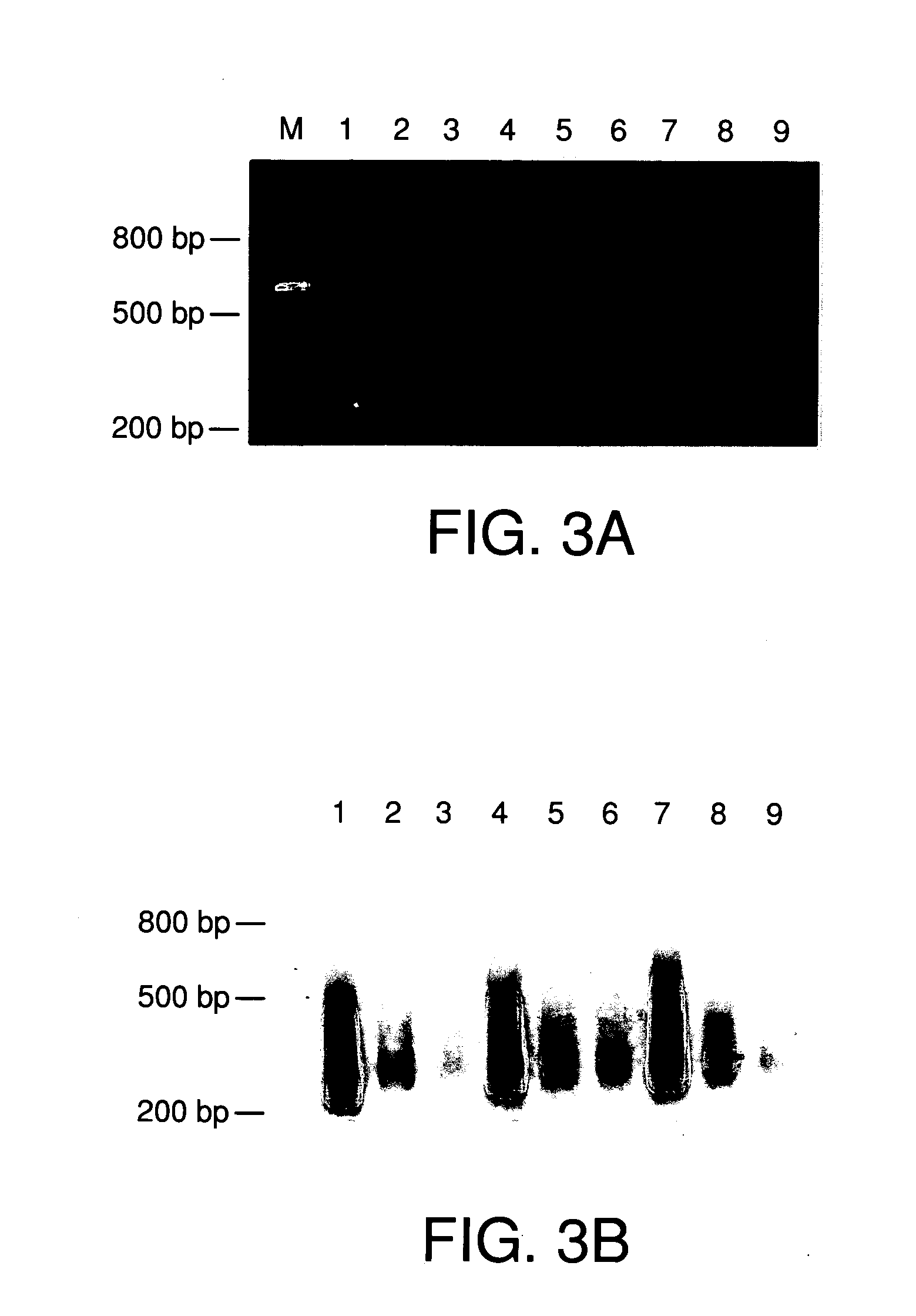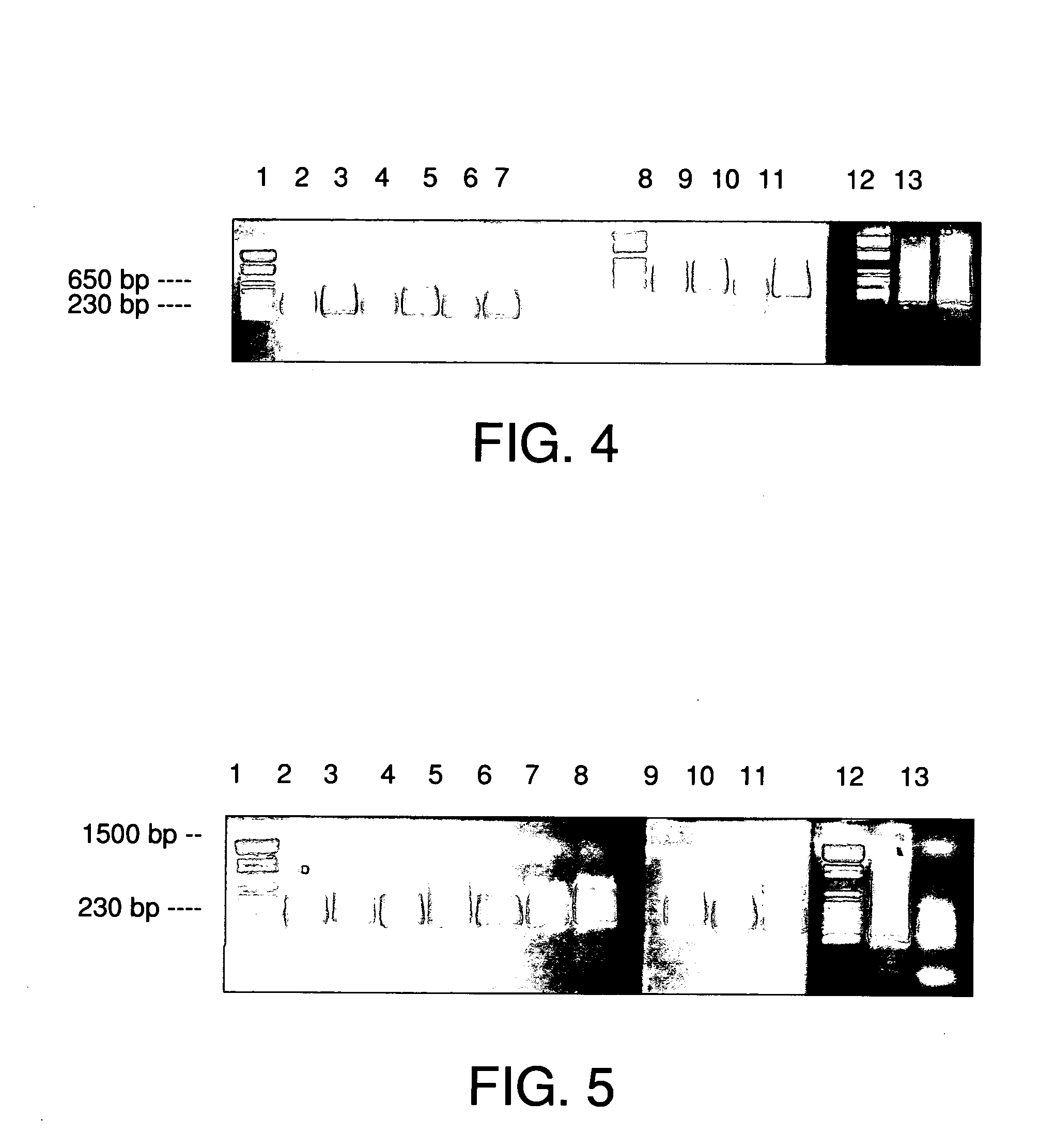Methods of making repetitive sequences removed probes and uses thereof
a technology of repetitive sequences and probes, which is applied in the field of production of repetitive sequences removed probes, can solve the problems of not all cytogenetically visible chromosome rearrangements, conventional blocking methods, and many drawbacks, and achieve the effect of simplifying the protocols for using these probes in fish and reducing the cost of manufactur
- Summary
- Abstract
- Description
- Claims
- Application Information
AI Technical Summary
Benefits of technology
Problems solved by technology
Method used
Image
Examples
example 1
PCR Amplification of Source DNA and Preparation of Biotin Labeled Driver DNA
[0100] The degenerate primer UN1 (5′CGGGAGATCCGACTCGAGNNNNNNA TGTGG-3′) (SEQ ID NO: 1) was first used to directly DOP-PCR and recover the source selected microdissected DNA fragments. 2 μl of each selected chromosome DNA was added to PCR reaction mix (50 μl) which contains 10 mM Tris-HCl, pH 8.4, 2 mM MgCl2, 50 mM KCl, 200 μM each dNTP, 2 μM primer and 2 units Taq DNA polymerase. The reaction was heated to 96° C. for 2 min, followed by 25 cycles at 94° C. for 1 min, 1 min at 56° C., and 1 min at 72° C., with a 5-min final extension at 72° C.
[0101] A driver DNA was created as follows: human genomic DNA that predominantly contains repetitive sequences was microdisected and biotin-labeled. The mixture of driver DNA was labeled with biotin by nick translation. For example, 5 μl of 10×dNTPs including biotin-16-dUTP were mixed with 3 μg driver DNA and 5 μl DNA Polymerase I / DNase I in a total volume of 50 μl, the...
example 2
Hybridization of Driver DNA to Source DNA
[0102] Driver DNA (10 μg) was labeled with biotin by nick translation. After amplification with the UN1 primer, 100 ng microdissected source DNA was hybridized with 10 μg biotin-labeled human repetitive sequences, i.e., driver DNA, in 20 μl hybridization solution (6×SSC, 0.2% SDS) at 55° C. overnight. After hybridization, 20 μl Avidin (5 μg / ml)(Vector Laboratories, Inc., CA) was added to the hybridization mix and incubated at 37° C. for 20 min. [0103] a) First Subtraction of repetitive Sequences from Source DNA
[0104] After incubation of the driver DNA and source DNA as described above, 240 μl ddH20 and 300 μl buffer saturated phenol were added to the hybridization mixture, vortexed for 30 sec, and centrifuged at 14,000 rpm for 5 min. The supernatant was transferred to a clean tube with 300 μl Phenol:chloroform:Isoamyl Alcohol (25:24:1), vortexed for 30 sec, and centrifuged at 14,000 rpm for 5 min.
[0105] b) Precipitation of Supernatant
[010...
example 4
Subtraction of Repetitive Sequences from Source DNA by Magnetic Beads Post Ethelol Subtraction
[0111] Method 1: The source DNA obtained in example 3 was purified further as follows.
[0112] (1) Cool the two hybridized DNA (source DNA and driver DNA) to room temperature.
[0113] (2) 4.4 mg (440 p1) streptavidin magnetic particles (Boehringer Mannheim) were prepared according to the manufacturer's instructions and resuspended in 125 μl of 10 mM TRIS-HCl, pH 8.0, 1 mM EDTA, pH 8.0, 2 M NaCl (2× binding and washing buffer). 100 μl streptavidin magnetic particles were added to 100 μl hybridized DNA mixture and incubated at room temperature for 30 min with shaking. Tubes were then applied to a magnetic particle separator (Boehringer Mannheim) for 3 min and the supernatant was gently removed. This supernatant was added directly to the remaining, unused magnetic particles with buffer freshly removed, and incubated with axial rotation as above. The second supernatant (200 μl) was removed and D...
PUM
| Property | Measurement | Unit |
|---|---|---|
| Fraction | aaaaa | aaaaa |
| Molar density | aaaaa | aaaaa |
| Magnetic force | aaaaa | aaaaa |
Abstract
Description
Claims
Application Information
 Login to View More
Login to View More - R&D
- Intellectual Property
- Life Sciences
- Materials
- Tech Scout
- Unparalleled Data Quality
- Higher Quality Content
- 60% Fewer Hallucinations
Browse by: Latest US Patents, China's latest patents, Technical Efficacy Thesaurus, Application Domain, Technology Topic, Popular Technical Reports.
© 2025 PatSnap. All rights reserved.Legal|Privacy policy|Modern Slavery Act Transparency Statement|Sitemap|About US| Contact US: help@patsnap.com



